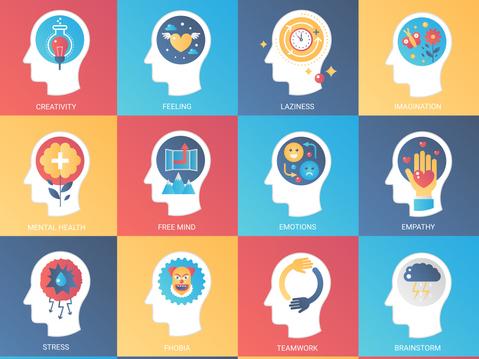As part of a project about student perspectives on student success, my colleagues and I turned up an interesting perspective: mature students define success as the connection between knowledge, the ability to apply it and having the confidence to do so. What struck us was how integral that affective component was in activating the knowledge and skills they gained in their studies. Students also spoke to the importance of a sense of purpose and connection to others through key relationships developed during their studies.
In my work as an educational developer in higher education, I most often collaborate with faculty to develop their course designs, refine their teaching strategies and assessment approaches, and respond to student feedback. Usually, faculty are concerned with ways that will help students learn and master the content in order to achieve the course learning goals. This makes sense – it is the core work of teaching and educational development.
- Move student communication from passive to active using ‘I like, I wish, I wonder’
- What is an authentic teacher and how can you become one?
- Co-creation as a liberating activity
However, I don’t often encounter faculty who spend as much time considering the affective side of their students’ learning experiences. If they do, most view it as incidental. Students might feel anxious or excited about their coursework. But these emotions are either to be overcome (in the case of anxiety) or used to fuel their work (in the case of excitement). In either case, emotions are viewed as an individual experience, not as an aspect that falls under the faculty members’ influence. However, as Sarah Rose Cavanagh of Simmons University writes in her 2016 book The Spark of Learning, emotion and cognition are intertwined at the biological level. Humans need emotion for motivation and learning. If faculty want to create powerful learning experiences, intentionally engaging students intellectually and emotionally is critical.
How might combining affective and cognitive learning shape views of success?
What might happen if more faculty considered how they might more intentionally engage students at the affective level? How might these emotional connections help students tap into motivation deeper than what the pursuit of grades offers them? How might integrating the emotional and the cognitive lead them to redefine what they viewed as success and shape the directions they decided to pursue?
I feel fortunate that I stumbled upon the power of emotional connection from my earliest teaching experiences. Drawn to service learning and community-engaged learning, I have integrated such experiences into almost every course I’ve taught over the past 18 years. Although these experiences require a lot more legwork than is typical of standard courses, the way they reach students at the level of empathy makes it worth it. Witnessing the profound insights and shifts in core assumptions in my students are among the most satisfying experiences I’ve had as an educator.
In one class I taught on race and ethnicity in Latin America, I asked students to volunteer with the local Latino cultural centre. Immigration to the US was not the only focus of the class – we looked at cultural practices and historical events throughout Latin America. However, the community-engaged experience was what made the most impact. In his final reflection essay, one student wrote that the volunteering had profoundly changed the way he viewed immigrants from Latin America. He had got to know some immigrants as people and couldn’t go back to the negative stereotypes he had previously held about this community.
Another example comes from my course Near Peer Mentoring: An Experience in Urban Education. While learning about persistent patterns of inequity in the US education system, my students serve as mentors for students at a local high school who are preparing for college. They engage in continuous reflection, making connections between the two.
Often, this process leads my students to develop critical understandings about the structures of education that create uneven opportunities for the communities they serve, and to develop empathy for the real people they get to know throughout the process. One of my students was so moved by what she was learning that she worked with her mother, a public school educator, to design a professional development experience for teachers. That she was inspired to go over and above what was required in the course is a testament to what is possible when students make those connections between knowledge, skills and emotion and can see a new sense of purpose.
Empathy and encountering learning possibilities
These outcomes were not something that I explicitly required or expected of my students. Yet making space for experiences and reflections that allow students to tap into empathy opens up the possibility of such outcomes. Community engagement helps students experience learning in a total, embodied way that connects them to people and perspectives they might not otherwise have encountered.
Many courses in many disciplines can make space for community-engaged experiences, even if it is just a tiny part of the course. While it can require effort to establish partnerships with community organisations, many institutions have centres that can help broker those connections and make the process easier. Reflection is also crucial; students need to reflect on their own experiences, compare them with new experiences and connect to the context they are studying in class. In the process of reflection, I have seen deep learning come together in my students.
Readings and other course materials come alive when students consider them in the context of their mentoring relationships, for example. They come to see their singular experiences in a broader context, informed by the academic learning in the course.
The trick is to design your course so both types of learning – cognitive and affective – come together in a careful dance where each pushes and pulls against the other in balance. When it works, the result is a heartfelt approach to teaching that helps students integrate the two domains and leads them to reach new heights of purpose-filled success.
Carol Subiño Sullivan is assistant director of the Faculty Teaching and Learning Initiatives in the Center for Teaching and Learning at Georgia Tech.
If you would like advice and insight from academics and university staff delivered direct to your inbox each week, sign up for the Campus newsletter.




comment